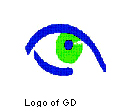 |
 |
 |
 |
 |
 |
 |
 |
 |
 |
 |
 |
Project description
Name der Fallstudie
Green Diploma, certification for sustainable building operation
Green Diploma, Zeugnis/Auszeichnung für nachhaltiges Bauen
Description of context
Social Housing Departments are typically organized over neighbourhoods built in the same period, with same technical standard and architecture. There are app. 8.000 departments in Denmark, with a size from 20 up to several thousands dwellings. Each Department is economically independent, and has its own local board, consisting of residents, and elected by the residents. The local board is the primary actor to decide questions about operation of the buildings and green areas, green initiatives, and if whether they will go for the Diploma. The Departments are organized in Social Housing Associations that take care of administrative tasks, and provide staff for maintaining the buildings. There is app. 700 Housing Associations in Denmark. They are organised under the National Organisation for Housing Associations. Some associations are very active trying to make their departments take up sustainable initiatives. For instance, many associations are making green accounts for all their departments, and distribute them to the departments, hoping that it will make them act more sustainable. Some of the smaller Housing Associations have a joint Housing Association Manager, taking care of the administrative tasks for the associations.
The Green Diploma was launched in the autumn of 2003, and is therefore just in the initial stage, where the first experiences are being made. The Green Diploma has been developed by the National Organisation for Housing Associations (Boligselskabernes Landsforening, BL), with the Danish Centre for Urban Ecology (DCUE) doing the practical work, and administrating the diploma, i.e. assessing the material from the departments, and deciding if it qualifies them to get the diploma.
Description of project - background
The Green Diploma (GD) is a certificate for Social Housing Associations and Social Housing Departments. It states that the Department (or the association) are working environmentally systematically and goal oriented. App. 1 million residents live in the 530.000 social housing dwellings in Denmark (app. 20% of the housing stock). Green Diploma helps to visualise the environmental efforts, and give the association a green profile. When a housing department (or a housing association) has achieved the diploma, it lasts for 2 years and then it has to be revised.

Logo of Green Diploma
Description of project - objectives/aims
The Green Diploma allows for individual preferences on which environmental issues to take up. The department has to choose at least three issues to work on, out of the nine following: Heating, electricity, water, waste, procurement, cleansing and chemicals, transport, green areas, information and activities for residents. The nine departments, who have achieved the diploma so far, have defined rather different goals (Click here for The departments? environmental initiatives (.pdf))
Most departments have chosen rather simple goals, others have been more ambitious, and have defined goals for all nine environmental issues.
Description of project - time interval and stages
The Green Diploma was launched in 2003
Description of project - financing
The guide for the Green diploma is available for free on the web. For the housing departments, participation is free in the introduction period. It has not yet been decided what the price should be after this period. The housing departments (or housing associations) finance the different initiatives themselves.
Description of project - other sectors involved
The Green Diploma is holistic, and covers different sectors on a local scale
Welche Tools wurden verwendet, um Nachhaltigkeit zu beurteilen?
Weiterführende Informationen (nur auf Englisch):